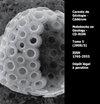安哥拉白垩系品达白云岩储层的新地层和成因模式(二)——反对早白云化和早淋滤的有力论据
IF 1.5
4区 地球科学
Q2 GEOLOGY
引用次数: 3
摘要
这是对坪达群地层和成因模式的第二次贡献。安哥拉北部近海刚果盆地中白垩统品达群是一个海侵上序。下部为布法罗相和帕卡萨相,分别为混合相和钙质白云质颗粒为主的织构。两相均发生了强烈的成岩蚀变,主要受白云岩置换和淋滤作用。与其他作者所表达的两种蚀变类型都是早期成岩现象的观点相反,有大量证据表明,白云岩替代和方解石浸出的埋藏成因分别开始于不低于150米和400米的深度。本文章由计算机程序翻译,如有差异,请以英文原文为准。
New stratigraphic and genetic model for the dolomitic Cretaceous Pinda reservoirs in Angola Part II – Compelling arguments against early dolomitization and early leaching
This is the second contribution to the stratigraphic and genetic model of the Pinda Group. The mid-Cretaceous Pinda Group of the Congo basin in the northern Angolan offshore is a transgressive supersequence. Its lower part is made of Bufalo and Pacassa facies that correspond respectively to mixed and calcareous-dolomitic grain-dominated fabrics. Both facies were strongly diagenetically altered, mostly by dolomitic replacement and leaching. Contrary to opinions expressed by other authors that both styles of alteration are early diagenetic phenomena, there is substantial evidence for a burial origin with dolomitic replacement and leaching of calcite having started at depths not less than 150 m and 400 m, respectively.
求助全文
通过发布文献求助,成功后即可免费获取论文全文。
去求助
来源期刊

Carnets De Geologie
Earth and Planetary Sciences-Geology
CiteScore
2.90
自引率
14.30%
发文量
21
审稿时长
>12 weeks
期刊介绍:
Information not localized
 求助内容:
求助内容: 应助结果提醒方式:
应助结果提醒方式:


